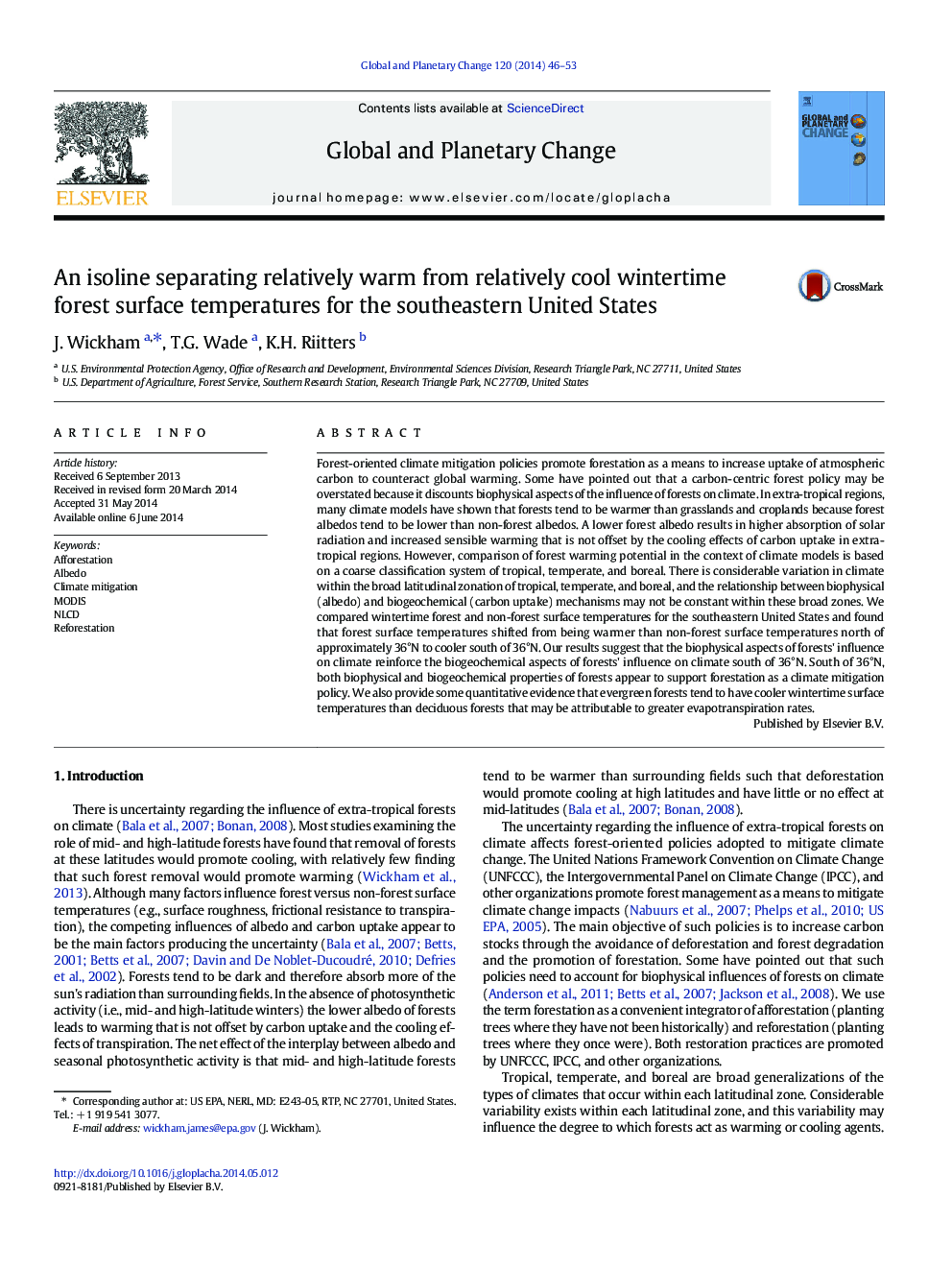| Article ID | Journal | Published Year | Pages | File Type |
|---|---|---|---|---|
| 4463410 | Global and Planetary Change | 2014 | 8 Pages |
•Forests are cooler than open areas south of 36°N.•Forest biophysical & biogeochemical influences on climate are aligned south of 36°N.•Forestation climate mitigation potential may extend beyond the southeastern region.
Forest-oriented climate mitigation policies promote forestation as a means to increase uptake of atmospheric carbon to counteract global warming. Some have pointed out that a carbon-centric forest policy may be overstated because it discounts biophysical aspects of the influence of forests on climate. In extra-tropical regions, many climate models have shown that forests tend to be warmer than grasslands and croplands because forest albedos tend to be lower than non-forest albedos. A lower forest albedo results in higher absorption of solar radiation and increased sensible warming that is not offset by the cooling effects of carbon uptake in extra-tropical regions. However, comparison of forest warming potential in the context of climate models is based on a coarse classification system of tropical, temperate, and boreal. There is considerable variation in climate within the broad latitudinal zonation of tropical, temperate, and boreal, and the relationship between biophysical (albedo) and biogeochemical (carbon uptake) mechanisms may not be constant within these broad zones. We compared wintertime forest and non-forest surface temperatures for the southeastern United States and found that forest surface temperatures shifted from being warmer than non-forest surface temperatures north of approximately 36°N to cooler south of 36°N. Our results suggest that the biophysical aspects of forests' influence on climate reinforce the biogeochemical aspects of forests' influence on climate south of 36°N. South of 36°N, both biophysical and biogeochemical properties of forests appear to support forestation as a climate mitigation policy. We also provide some quantitative evidence that evergreen forests tend to have cooler wintertime surface temperatures than deciduous forests that may be attributable to greater evapotranspiration rates.
